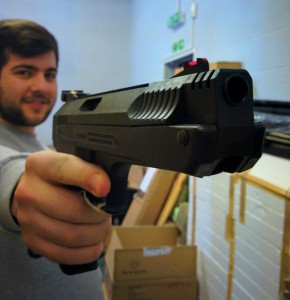
Our intrepid airgun enthusiast Steph Brooks continues his excellent comparison series, Face Off. This month it’s the turn of HW40 by Weihrauch and the HP-01 by Zoraki / Webley Alecto…..
The HP-01 used to be known as the Webley Alecto but remains exactly the same pistol underneath. Both of these pistols use a pneumatic pump system where the shooter compresses air inside the cylinder which then fires the pellet when the trigger is pulled. The idea behind this design is to provide the accuracy and power of a pre-charged pistol but without the need for a compressor or air bottle, providing power and precision in the palm of your hand.
First Impressions
Both of these pistols actually look remarkably similar and have something about the Desert Eagle style look about them. Both are finished in matte black, with the Zoraki having marginally better detailing around the pistol grip especially. The grip of the Zoraki is also far more ergonomically shaped, for a tighter grip whilst aiming.
The HW40 is around 50mm shorter than the HP-01 which is not that noticeable, but it does weigh almost half a kilogram lighter. This was far more apparent after shooting these pistols for a good hour. I can imagine the Zoraki would start to feel heavy after a long day down the range.
Both of these pistols feel incredibly solid and utilise a high grade polymer that is moulded around a metal frame for added strength. In my opinion neither of these pistols is going to set the world alight with their looks and both of them seem to be quite generic, as they look like many other pistols in this category.
In conclusion I think the winner is the HW40 but only just, thanks its lower weight and despite its marginally inferior finish. To me, looks are not as important as something that can actually affect shooting, and the heaviness of the Zoraki started to affect the accuracy of my aim after a while.
Winner: Weihrauch HW40
Pumped Up Kicks
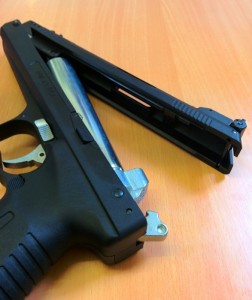
The main difference between these two pistols is that the HW40 is a single stroke pneumatic whilst the HP-01 is a multi-stroke pistol. What this essentially means is one pump for the HW40 puts it ready to fire at full power whilst the HP-01 can be pumped between one and three times to reach any of its three power settings. Pump once for low power, twice for medium and three times for full power. This gives shooters extra flexibility in how much power they want but aside from testing I found myself using the second and third power settings exclusively.
The only reason I can think why you would use the lowest setting is that the pistol makes less noise… but who doesn’t like loud noises?! Ok, your neighbours might not, and I understand that noise is a valid concern in built up areas, but when down the range I can’t see a good reason to shoot at the lowest power setting.
Now, I’m not Jeremy Clarkson! Power isn’t everything but it does mean flatter trajectories and better range, things that are far more desirable to me than quietness. I have heard reports from people of increased muzzle rise when fired at full power, but it was not something I noticed, particularly when shooting two handed.
However, I was using an under side mounted laser on the HP-01, which may have acted as a barrel weight, reducing the muzzle rise but again, unless you are in serious target shooting competitions, I’m sure this issue is not something that will bother you.
To pump the Zoraki to full power takes quite a bit of strength, while the HW40 is slightly easier. One thing to note it is quite easy to catch clothing and fingers whilst closing both pistols so make sure you have both out of the way when shutting the breech. I’m going to give the win to the HW40 again here as it is slightly easier to pump and only requires one pump to shoot at its most powerful as opposed the HP-01.
Winner: Weihrauch HW40
Shots Fired
Despite early wins for the HW40, here is where the ZP-01 really comes into its own. When both shooting at full power the HW40 produces around 2 ft/lbs of muzzle energy, while the HP-01 produces around 5.5ft/lbs. This is a big difference and means that whilst the HW40 will struggle to go through an empty Coke can, the HP-01 is capable of taking out pets such as rats quickly and humanely and is one of the few non PCP or spring powered pistols that is capable of close range pest control.
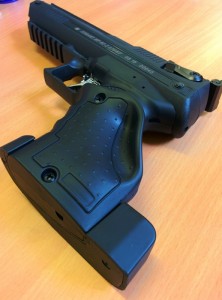
This really puts the Zoraki in a different class of pistol from the Weihrauch and makes it ideal for almost any shooting discipline, whether it’s target shooting, plinking or pest control. On the other hand, the Weihrauch is only really good as a short range plinker or target shooter.
It is worth noting at this point that the Zoraki is nearly £100 pounds more expensive and so a difference in quality is to be expected but if you are looking at serious competition shooting or to take out some pesky pests, there is really only one option.
The triggers of both are two stage and fully adjustable with a hex key, with the ZP-01’s match trigger being crisp and sharp and the HW40’s having a tiny bit of creep, but not enough to affect accuracy. Both group well at their effective ranges using Air Arms Field (4.51) pellets and neither pistol experienced any jams or problems while testing.
There is only one winner here; the Zoraki is so much more versatile in its use with higher power and a much longer effective range. This is where the price difference of the two pistols really becomes apparent, as the HW40 is certainly not a bad pistol, and performs better than most other pneumatics in its price range, such as the Beeman 2004E. However its lack of power is to be expected, as it almost half the price of the Zoraki.
Winner: Zoraki HP-01/ Webley Alecto
Sights & Extras
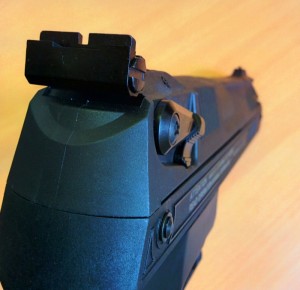
The sights of the Zoraki are also of exceptional quality, with the foresight flipping over to offer a choice of blade width, as well as different positioning. This allows for great accuracy right out of the box. The HW40 features front and rear fibre optic sights that are fully adjustable, although not as much as the HP-01’s, and are again, perfectly aligned. The fibre optics work in all but the darkest of conditions. It is worth noting that the Zoraki’s iron sights are not fibre optic so external optics is required for shooting in low light conditions.
Both pistols feature rails on top for the easy attachment of red dot sights or scopes, but only the Zoraki has an under mounted weaver rail for laser sights, torches or other suitable attachments. I used a laser in my testing, set up to 45 yards, and although a red dot sight is more effective for target acquisition, it is nice to have the option for under mounted attachments.
In terms of accessories the HW40 is a bit of a bare bones affair with the pistol and manual included in the box, whereas the HP-01 comes with a bottle of gun oil, adjustment tools and a cleaning brush as well as the manual and gun. Another nice feature included with the Zoraki is a test sheet from the factory showing the grouping achieved with each particular pistol. It was, according to the sheet, tested using Crosman pointed pellets which are not exactly famed for their accuracy. This strikes me a bit like Audi including official 0-60 figures with their latest car in snow tires, but whatever, it’s nice to have and gives each pistol a more individual touch.
The added accessories as well as the under mounted rail means I have to give this one to the Zoraki HP-01.
Winner: Zoraki HP-01 /Webley Alecto
And The Winner Is…
Well its 2 – 2 so far in the categories but I have to pick a winner. There is no penalty shootout this time, no referendum, the answer is obvious. With its adjustable power, crisper trigger and extended range the winner has to be the Zoraki HP-01.
The HW40 is a very good pistol for its price point and provides the best accuracy of any pistol that is sub £150. If you are looking for a pistol just for plinking there is no reason not to buy the HW40 but it is just outclassed by a far more expensive and more versatile pistol. The Zoraki is an excellent target shooter, plinker, pest controller or vermin hunter with rails for a variety attachments making it one of the most powerful and versatile pneumatic pistols on the market today.
Winner: Zoraki HP-01
You can grab yourself a Weihrauch HW40 air pistol here, and a Zoraki HP-01 / Webley Alecto here. To learn more about Weihrauch, head to our collections page.
Which air pistol do you think makes the grade? Do you own either? Or have you got a different recommendation altogether? Let us know in the comments below.

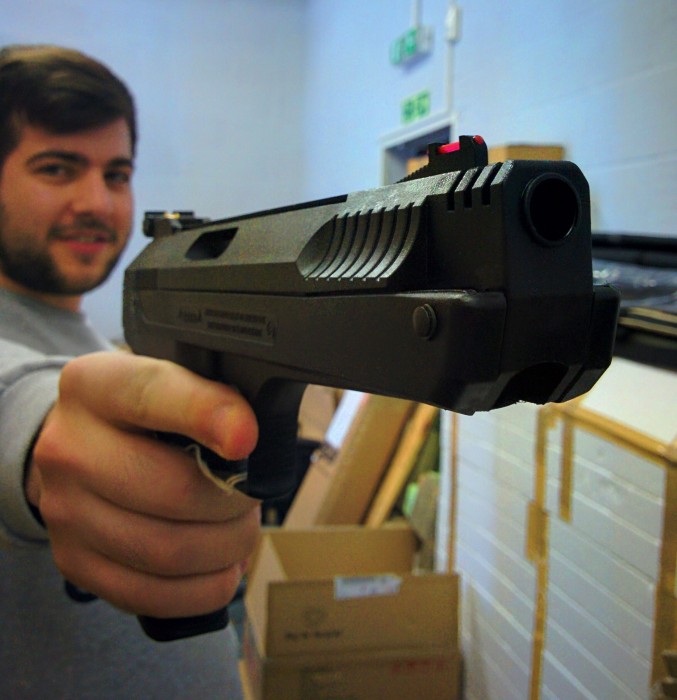


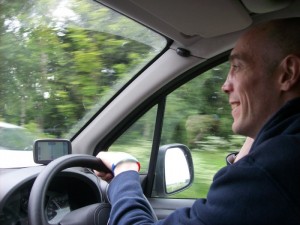

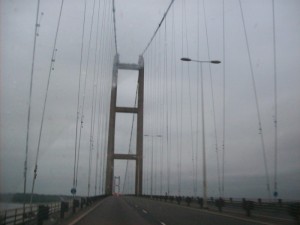
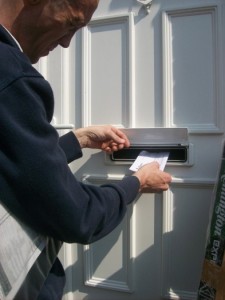
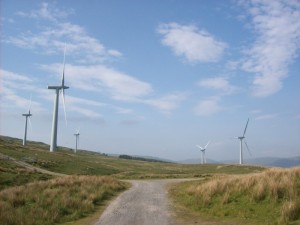 Driving over Lambrigg Fell in Cumbria, Chris passes the Lambrigg Wind Farm (pictured), owned by RWE npower renewables (previously National Wind Power). The wind farm, opened in September 2000, comprises five turbines that produce enough pollution-free electricity to meet the average needs of around 2,500 UK homes.
Driving over Lambrigg Fell in Cumbria, Chris passes the Lambrigg Wind Farm (pictured), owned by RWE npower renewables (previously National Wind Power). The wind farm, opened in September 2000, comprises five turbines that produce enough pollution-free electricity to meet the average needs of around 2,500 UK homes.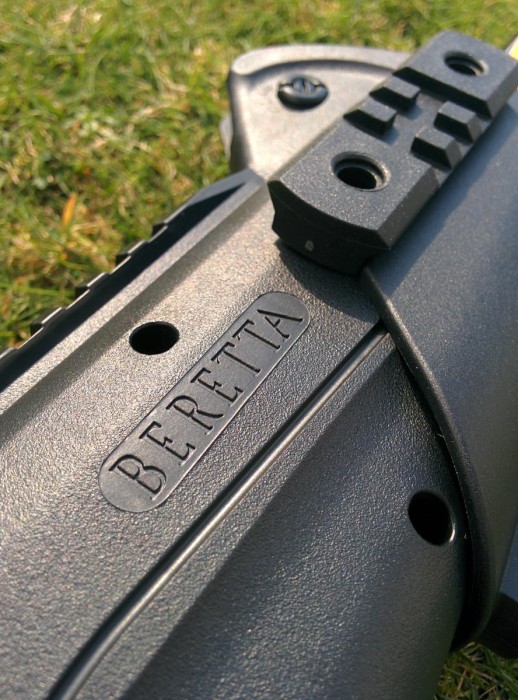
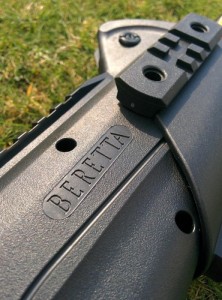 leading Co2 powered air rifles…..
leading Co2 powered air rifles…..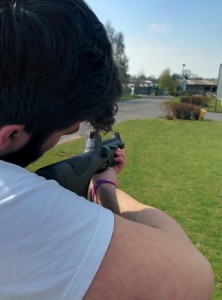
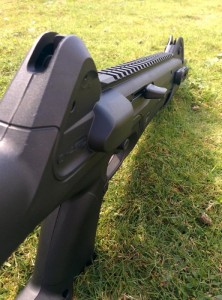 When it comes to shooting I tested both rifles with 8.4 grain, Air Arms Field 4.51 pellets which feature a slightly smaller dome and are more compatible with multi shot magazines. In the Winchester, these pellets averaged around 480 FPS from the 19.25” barrel with CX-4 averaging around 390 FPS from its slightly shorter 17.5” barrel. This difference in power is not that noticeable when shooting targets indoors, as I was doing, but may be something to think about if you’re outside, where wind and other weather conditions have a greater effect on pellet flight.
When it comes to shooting I tested both rifles with 8.4 grain, Air Arms Field 4.51 pellets which feature a slightly smaller dome and are more compatible with multi shot magazines. In the Winchester, these pellets averaged around 480 FPS from the 19.25” barrel with CX-4 averaging around 390 FPS from its slightly shorter 17.5” barrel. This difference in power is not that noticeable when shooting targets indoors, as I was doing, but may be something to think about if you’re outside, where wind and other weather conditions have a greater effect on pellet flight.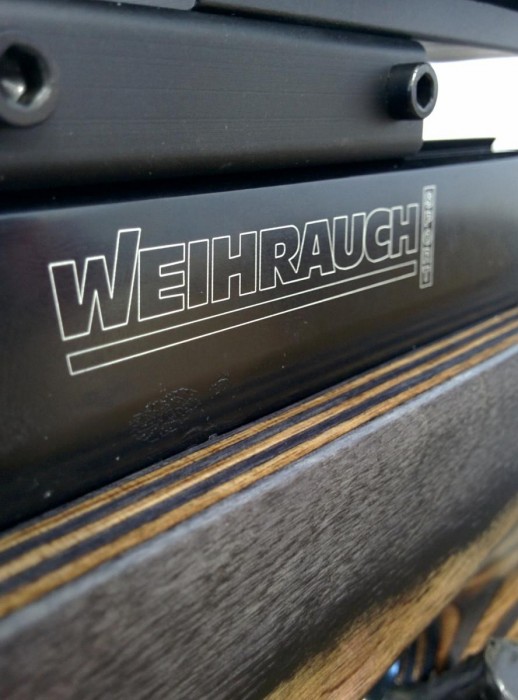
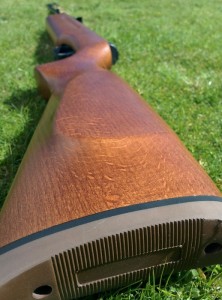
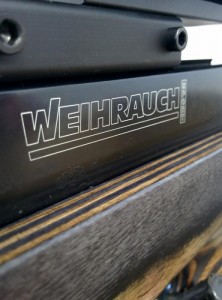
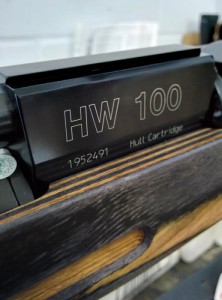 is system offers multiple advantages over the conventional spring such as lower recoil, no loss of power over time, and increased accuracy and consistency. The HW90 had a classic sporter stock and has been a firm favourite over the past years with hunters and pest controllers thanks to its high power output and fantastic build quality.
is system offers multiple advantages over the conventional spring such as lower recoil, no loss of power over time, and increased accuracy and consistency. The HW90 had a classic sporter stock and has been a firm favourite over the past years with hunters and pest controllers thanks to its high power output and fantastic build quality.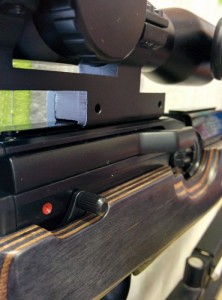
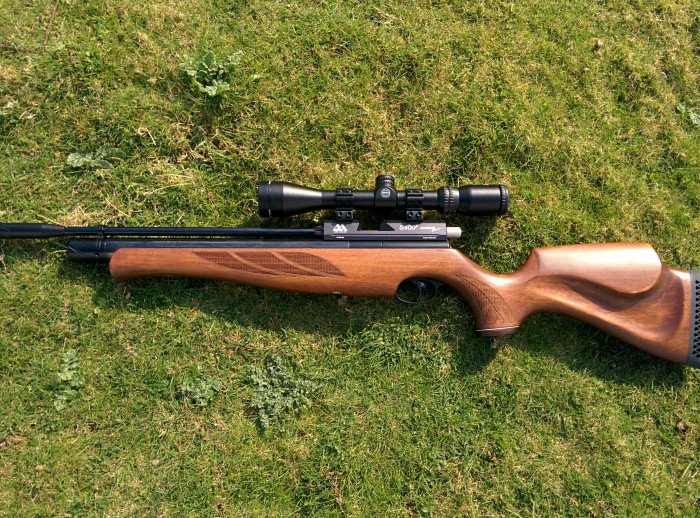
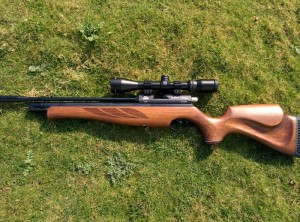
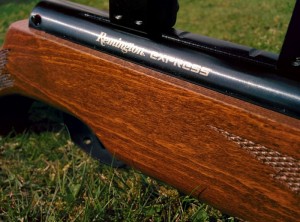
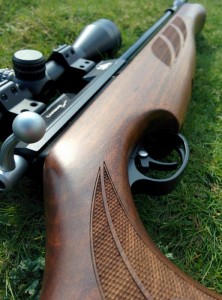
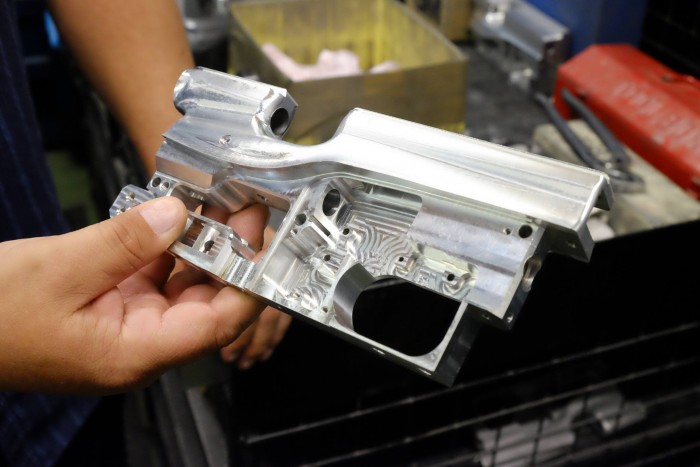
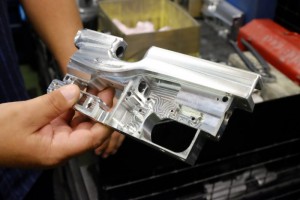
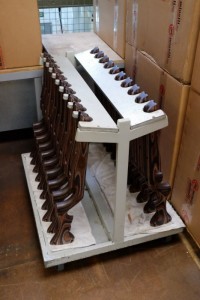
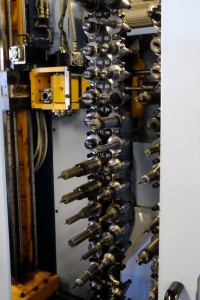
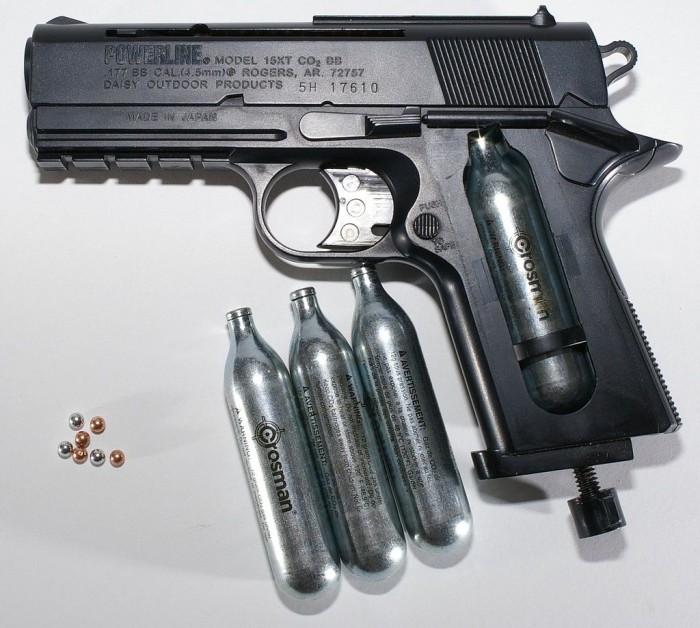
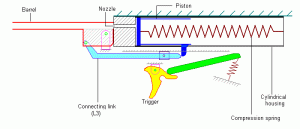
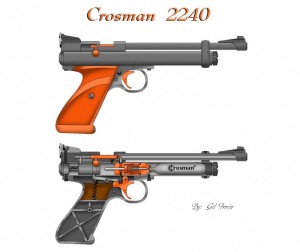
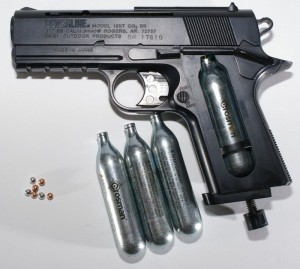
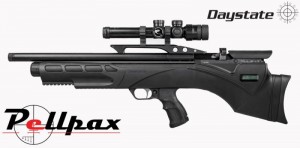
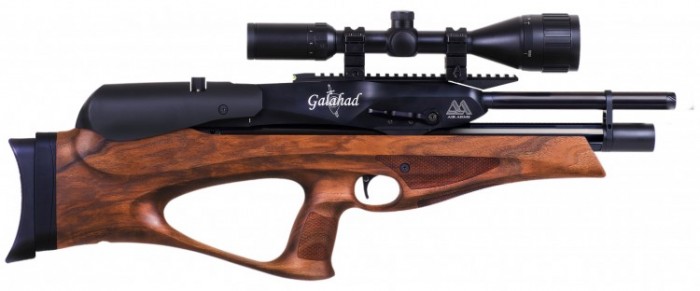
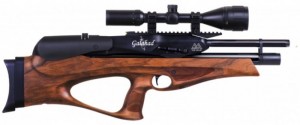
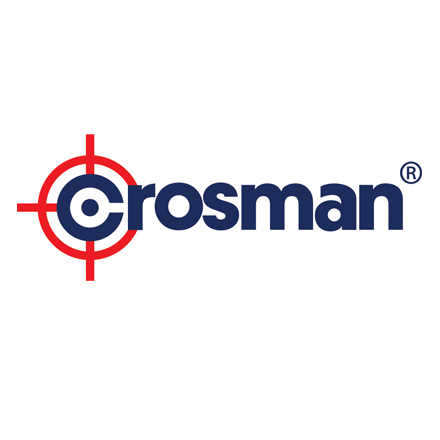
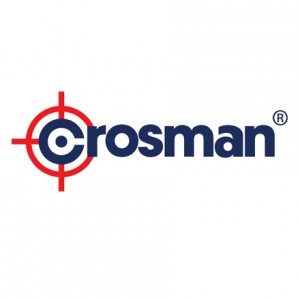
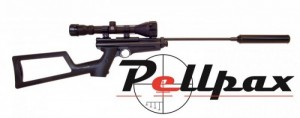
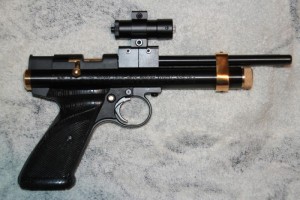




 and brandishes a
and brandishes a